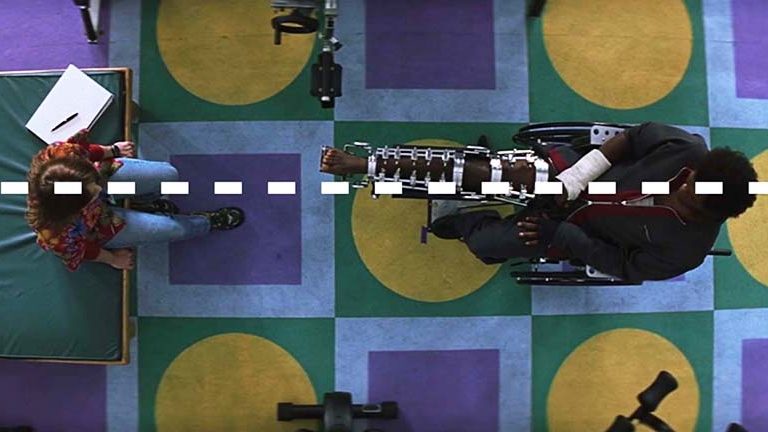Submarine Channel

Great Lessons from the YouTube School of Film
Top5's
Great Lessons from the YouTube School of Film
It’s hip to say you shouldn’t go to film school. Why would you? It costs a fortune and doesn’t give you any certainties as far as getting a job. Not to mention the incapable and out-of-touch teachers you have to deal with, right? So, instead of film school, why not use the huge amount of free information online and educate yourself with a little help from the YouTube School of Film?
There is one thing I don’t see mentioned in those ‘another reason not to go to film school’ comments online, and that is the importance of a curriculum. If you do decide to create your own schooling by watching tutorials and video essays online, how do you select what to watch? How to challenge yourself? You need a ‘curator’ – someone who can assemble a broad selection of material for you to study. Sometimes it might be about stuff you already know, other times it might introduce you to things that are totally new to you.
Please allow me to be your curator today, and let me introduce you to some of the great film lessons that can be found online. I hope these videos will inspire you. If you have a favorite video essay, lecture or presentation that is not on this list, please leave a comment.
This is Joscha van Deijk’s Top 5 of film lessons found on YouTube.
1. Mark Andrews; CalArts Story Lecture (2 parts)
You might know Mark Andrews as the co-director of Brave, but he started as a storyboard artist, working on films like Spider-Man, The Iron Giant & The Incredibles.
In this lecture he shows his take on a Pixar internship assignment. In the first video we get to see him pitch a storyboard based on the Greek myth of Icarus. In the second video, Mandrews explains his approach to storyboarding and visual storytelling.
These videos are well known amongst storyboard artists, especially Andrews’ rant against the use of thumbnails. (“Waste of time!”) This isn’t a lecture on storyboarding though, it really is about storytelling and filmmaking – relevant to anybody who is interested in the art of (visual) storytelling. The biggest lesson to learn here, is that the story process is messy. You need mistakes and approaches that don’t work, before you can get to the stuff that does.
If you’d like to take a better look at the Icarus board he pitches in the first video you can check it out on his blog.
Further Watching
Andrew Stanton: The clues to a great story
Curiosity, Collaboration & imagination – Nate Stanton
2. Tony Zhou (Every Frame a Painting); Joel & Ethan Coen – Shot | Reverse Shot
Editor Tony Zhou is the man behind the much loved YouTube channel Every Frame a Painting; a channel filled with beautiful, slick videos in which Zhou discusses different aspects of filmmaking (with a slight emphasis on editing). All of Zhou’s videos, ranging from the composition of movement in the films of Akira Kurosawa, to the insane action comedies of Jackie Chan, are highly recommended.
This one is probably my favorite, because it deals with such a fundamental technique of filmmaking. Unlike many other contemporary filmmakers, the Coen brothers plan their films to the extreme. Instead of shooting a lot and composing their films in the editing room, the Coens shoot only what they need. It is nice to see how they use this basic, often under-appreciated, technique to strengthen and personalize their films. I also love the little interlude where Roger Deakins (probably the greatest cinematographer of our time) demonstrates why he shoots dialogue the way he does.
Further Watching
Directing – The Fine Arts of Blocking and Composition
The Coen Brothers with Noah Baumbach: Where and How to Begin a Film?
3. Joey Scoma (Rocket Jump film School); Die Hard Editing Concepts
The Five Star Collection DVD of Die Hard came with an extra, where the viewer could remix a series of used and unused takes from the film, to recreate his or her own version of two iconic sequences from the movie franchise. In this great video, Joey Scoma explains how this awesome DVD extra was his introduction to film editing.
Scoma illustrates three of the basics of film editing: the A-B-A structure of a point-of-view cutaway, cutting between camera movement, and breaking the 180° rule. What I love about these examples is that you can actually see why most of the possible variations don’t work. It is one thing to know you shouldn’t do something, it is something else to actually see what happens when you do it anyway. And it’s pretty cool to have examples that were created with outtakes from this classic action film.
Further Reading
Cuts & Transitions 101
David Lean’s Scene Transitions
4. Evan Puschak (The Nerdwriter): Batman v Superman: The Fundamental Flaw
I’m not too fond of articles and essays about things that don’t work. I prefer to hear about the stuff that people do like: what actually inspires them, or gets them excited. But there are exceptions, and at times you can learn a lot from looking at something you don’t like, and try to figure out why it isn’t working for you.
It helps if the analysis is done respectfully, which is the case in this video essay by Evan ‘The Nerdwriter’ Puschak. Instead of stringing together a series of insults and jokes at the expense of Zack Snyder, Puschak has carefully researched the flawed way in which Snyder tells a story.
The Nerdwriter posts a video every Wednesday, which is impressive, especially since every single one of them is very well produced, mixed and edited. I love his essays on film and art. He also makes videos on politics, music and literature. The Nerdwriter’s bite-sized videos always have an original hook, and his careful and solid wording make these some of the finest film articles I’ve found online thus far.
Further Reading
The Social Network – Designing Dialogue
Mr. Plinkett’s Star Wars Episode III: Revenge of the Sith Review
5. Mike Hill: The Forgotten Art of Blockbuster Cinema
Now that we are almost done with your introduction into the YouTube School of Film, let’s end this Top 5 with an hour long lecture! Designer Mike Hill knows a thing or two about storytelling. In this lecture, Hill uses Terminator 2 as a case study to illustrate the story fundamentals of Joseph Campbell’s monomyth structure, as well as the use of Jungian archetypes.
This might sound seriously boring, but if you take the time to watch this, you’ll be surprised by how entertaining the lecture is. T2 is the perfect case-study to explain these classic subjects. And the video shows just how solid the storytelling in those great blockbusters from the 1980’s and 1990’s really was.
This lecture is a fun and very understandable introduction into some film school essentials. More than the other videos in this Top 5, this one encourages you to seek out more information: new movies, and books by Campbell, Jung and the likes. It does what all good schools should do: it motivates you to look beyond what you already know; encourages you to search out new inspiration. And, by doing this, it pushes you to grow.
Further Watching
Joscha van Deijk is an Amsterdam based storyboard artist. He loves Film-Noir, Batman, Tintin, Rembrandt, the Beatles and more. You can find him on Twitter and Tumblr.






